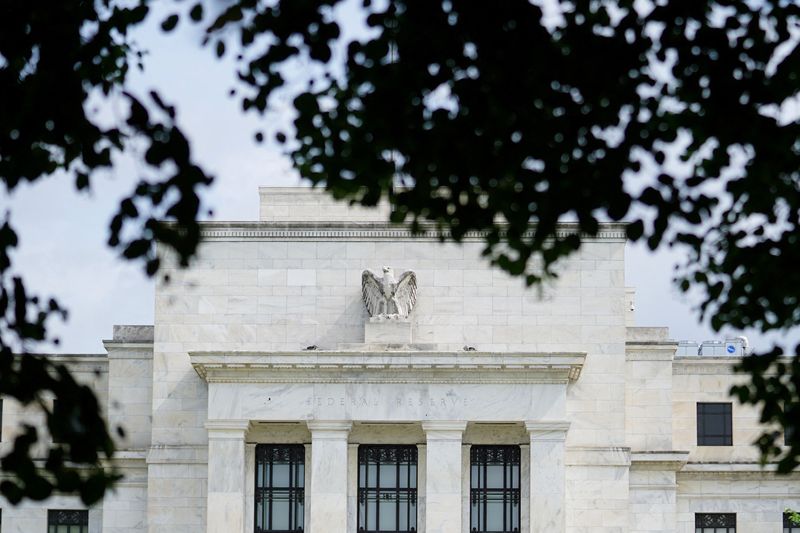© Reuters. FILE PHOTO: The exterior of the Marriner S. Eccles Federal Reserve Board Building is seen in Washington, D.C., U.S., June 14, 2022. REUTERS/Sarah Silbiger/File Photo
By Paritosh Bansal
(Reuters) – The U.S. bond market is calling a moment: the age of low interest rates and inflation that began with the 2008 financial crisis has ended. What follows is unclear.
The market’s view has come into sharp focus in recent days amid a dramatic run-up in 10-year Treasury yields that hit 16-year highs.
Behind that move is a bet that the disinflationary forces the Federal Reserve fought with its easy money policies in the aftermath of the financial crisis have abated, according to investors and a regularly updated New York Fed model based on yields.
Instead, it shows investors have come to believe that the U.S. economy is probably now in what a regional Fed president said may be a “high-pressure equilibrium,” characterized by inflation running higher than the Fed’s 2% target, low unemployment rates and positive growth.
“We have moved into a new era here,” said Greg Whiteley, a portfolio manager at DoubleLine. “It’s not going to be a matter of struggling to get the inflation rate higher. It’s going to be working to keep it down.”
This momentous shift in the outlook for rates has profound implications for policy, business and people. While higher interest rates are good news for savers, businesses and consumers have become used to paying nothing for money over the past 15 years. The adjustment to a higher-for-longer rate environment could be painful, manifesting in failed business models and unaffordable homes and cars.
It could also force the Fed to keep raising rates to the point something breaks again, like three U.S. regional banks did in March. Minneapolis Fed President Neel Kashkari wrote last week that if the economy was in a high-pressure equilibrium, the Fed would “have to raise rates further, potentially going significantly higher to push inflation back down to our target.”
He assigned a 40% probability to such a scenario.
Kashkari did not respond to a request for comment.
READING YIELDS
A market-based Fed model that breaks down the into its components provides further insight into investors’ thinking.
In recent days, one component of yields — a measure of the compensation investors demand to lend money for the longer term — turned positive for the first time since June 2021, according to the Adrian, Crump and Moench (ACM) model.
This…
Click Here to Read the Full Original Article at All News…


